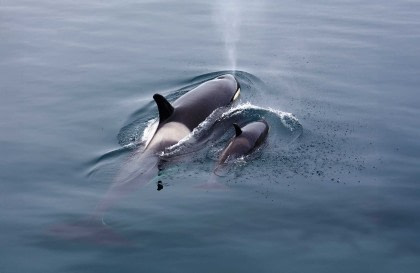The skinny on Spitsbergen and the Svalbard archipelago
The Svalbard archipelago is found in the Arctic Ocean, approximately 660 km (410 miles) north of the northernmost tip of Norway. It is a geologist’s paradise, having a rich geological history that can be traced back through the Mesozoic era (65-245 million years ago), the Cambrian era (570 million years ago), and all the way to the Archean era, over 3.5 billion years ago.
The landscape of Svalbard is cold and bleak, and there is little vegetation or soil on the islands. Temperatures range from 3-7 °C (37.4 – 44.6 °F) in summer to between -13 °C and -20 °C (8.6 and -4 °F) in winter. Norway, Sweden, and Russia all have equal claim to the land under the Spitsbergen Treaty (signed in 1920). However, Svalbard is governed by the sovereignty of Norway and therefore comes under Norwegian environmental and cultural protection.
The specs of Spitsbergen, specifically
Spitsbergen is the largest island in the Svalbard archipelago. It measures 39,500 square km (15,251 square miles) and accounts for over half the landmass of Svalbard. In the northeast of Spitsbergen is Newtontoppen, the highest peak of the archipelago, measuring 1717 meters (5633.2 feet) above sea level. The mountain is mostly concealed by heavy glaciation, so it’s full height is not readily apparent. The landscape in Spitsbergen is reminiscent of the alpine regions of Europe – in fact, Spitsbergen is named after the pointed mountains. The Dutch “spits” means “pointed,” and “Bergen” means “mountain.”

The story of Spitsbergen’s rocks
The history of the rock here tells an incredible story. Svalbard’s rock was originally formed in the tropics, and over time the land has shifted northwards to its current position. This rock has seen the rise and fall of the dinosaurs, has been through several ice ages, and of course, witnessed the entire history of humanity. Fossils are common in Spitsbergen. Fossilised plants from 60 million years ago can be found around the moraines of Longyearbyen.

Spitsbergen is rich in coal, and mining was started in 1899 by Norwegian Søren Zachariassen. In 2017 the Norwegian Prime Minister announced that they wanted to stop mining across Svalbard and to instead invest in tourism, research, and education.
Understanding the layers of Spitsbergen geology
Thankfully you don’t need to be a seasoned geologist to understand the fascinating Spitsbergen landscape. As the rock is bare of soil and vegetation, the layers are very clear to see. The rock is divided into three main section: basement, sedimentary cover rock, and unconsolidated deposits.
The Svalbard geological basement
This is the oldest rock in the formation. It is composed of a mixture of igneous rock and metamorphic rock. Folding of the layers can be clearly seen, and the most significant alterations can be seen in the northwest of Spitsbergen and along the north of Nordauslandet. Rock formed in the pre-Cambrian era is highly crystallised, and deposits of zircon crystal found in the north-west of Spitsbergen have been dated to over 3.2 billion years old. There are many areas on the island where the folding of the rock can be clearly observed, a marvellous exhibition of the power of time and geological force.

Spitsbergen sedimentary cover rock
The bare mountains of Spitsbergen were formed in the Devonian era (approximately 360-410 million years ago) when sand, silt, and mud were deposited in river beds and the shallow seas. Over the next several million years, layers of sandstone-shale and limestone would build up to form the impressive structures you can see today on a Svalbard trip.
It was during the Devonian period that a process called orogenesis occurred. Orogenesis happens when two of the Earths plates push together, forcing one plate upwards. This is how mountains are created. Due to the adverse weather conditions, there is very little soil in these regions, and this has exposed the underlying rock, allowing for easy viewing of the layers.
The unconsolidated deposits of Svalbard
The youngest areas of rock and geology date from the Quaternary era (approximately 2 million years ago). There is a history of volcanic activity in Spitsbergen, but the volcanos have long become dormant. However, active thermal springs can still be found, remnants of the Svalbard archipelago’s volcanic history. The geology of Spitsbergen specifically has been greatly influenced by glaciation and the last ice age. Moraines, fluvial deposits, and scree can be found in many locations.
Seeing Spitsbergen for yourself – on an Arctic voyage
If you want to explore Spitsbergen during your own Arctic cruise, you can make arrangements before flying into Svalbard Airport in Longyearbyen. From there we offer a wide range of tours that explore the archipelago by both land and sea. You’ll not only be treated to a magnificent geological adventure, you’ll find a visually stunning landscape where you may see several species of whale, polar bears, seals, walruses, and a species of reindeer that is wholly endemic to Spitsbergen.






